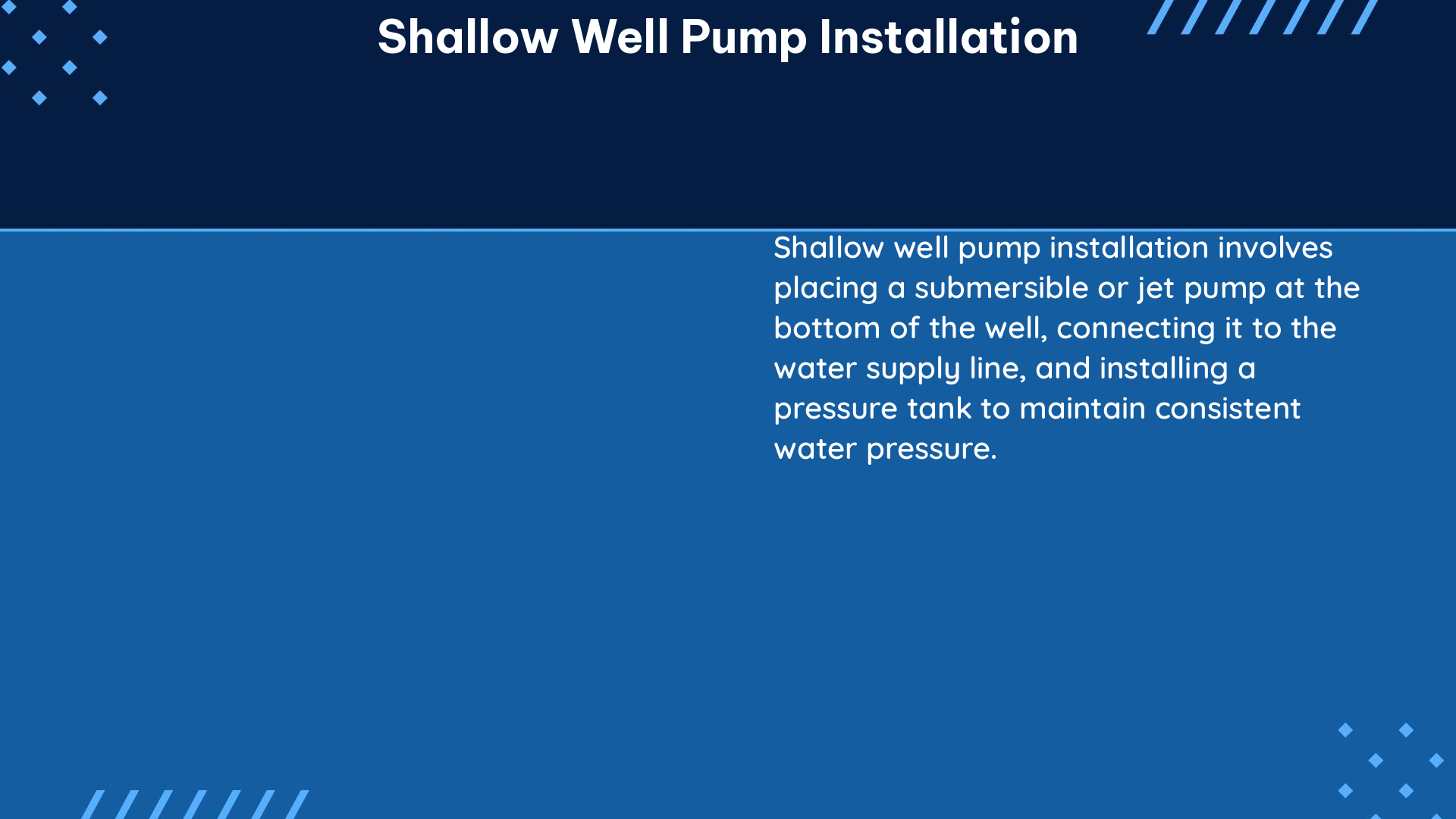Shallow well pump installation is a critical process that requires precise measurements, technical specifications, and adherence to local regulations to ensure the safe and efficient extraction of water. This comprehensive guide will provide you with a detailed, step-by-step approach to shallow well pump installation, focusing on the technical aspects and a DIY-friendly methodology.
Well Construction and Depth
A shallow well is typically defined as a well with a depth of less than 50 feet. In this case, the well diameter is approximately 3 feet, and the water depth is between 12 to 15 feet. The well casing should be made of durable materials, such as steel or PVC, and should extend at least 12 inches above the prepared ground surface or pump house floor. For wells located in floodplains, the top of the well casing should extend at least two feet above the 100-year flood level to prevent contamination.
Pump Selection

For a shallow well, a piston pump or a submersible pump is recommended. Piston pumps are self-priming, tough, and can be set up with a motor to meet the locally available power source. These pumps are typically rated for flow rates ranging from 10 to 50 GPM and can handle water depths up to 25 feet. Submersible pumps, on the other hand, are located inside the well casing and are generally quieter, making them suitable for indoor installation. Submersible pumps are available in a wide range of flow rates, from 5 to 100 GPM, and can handle water depths up to 150 feet.
Pump Capacity
The pump capacity should be determined based on the household water demand. For a 3-bedroom, 2-bathroom home occupied by two people, a pump with a flow rate of around 10-15 gallons per minute (GPM) should be sufficient. To calculate the required pump capacity, consider the following formula:
Pump Capacity (GPM) = Total Daily Water Demand (gallons) / Operating Time (minutes)
The total daily water demand can be estimated based on the number of occupants and their water usage habits. As a general guideline, a household of two people may have a daily water demand of around 300 gallons.
Pipe Sizing
The pipe size should be selected based on the pump’s flow rate and the distance between the well and the house. Larger pipe diameters reduce friction loss and ensure efficient water transfer. The following table provides a general guideline for pipe sizing based on flow rate and distance:
| Flow Rate (GPM) | Pipe Diameter (inches) |
|---|---|
| 10-15 | 1.25 |
| 15-25 | 1.5 |
| 25-40 | 2 |
| 40-60 | 2.5 |
It’s important to note that these are general guidelines, and the actual pipe size may need to be adjusted based on the specific installation requirements and local regulations.
Well Casing and Sealing
The well casing should extend at least 12 inches above the prepared ground surface or pump house floor, and for wells located in floodplains, the top of the well casing should extend at least two feet above the 100-year flood level. Well vents should be installed to permit air to freely enter and exit the well with changing water levels in the casing. The well should be properly sealed to prevent surface water and contaminants from entering the well, which can be achieved by using a sanitary well seal or a well cap.
Water Level Measurement
A means of measuring water level should be installed on the well, such as an airline tube, water level sounding tube, permanent pressure transducer, or other approved methods. This will allow you to monitor the water level and ensure that the pump is operating within its designed parameters.
Electrical Requirements
For non-U.S. installations, the pump and electrical system should be compatible with the local voltage requirements, typically 220/240 volts. The electrical system should be installed by a qualified electrician and should comply with local electrical codes and regulations.
Sediment Filters and UV Filters
Due to the lack of filtration in shallow wells, it is recommended to install a large, course filter pre-pressure tank (75-100 micron) and a sediment filter post-pressure tank. This will help remove any sediment or particulates that may be present in the water. Additionally, a UV filter can be added to the system to help disinfect the water and kill any harmful bacteria or microorganisms.
By following these technical specifications and guidelines, you can ensure a successful and efficient shallow well pump installation that provides a reliable and safe water supply for your home or property.
References:
- Hawai’i Well Construction and Pump Installation Standards
- USGS Technical Manual: Groundwater and Seepage
- California Department of Water Resources: Sustainable Groundwater Management
- Terry Love Plumbing & Remodel DIY & Professional Forum
- DoItYourself.com: Guidance Needed for Shallow Well Set Up

The lambdageeks.com Core SME Team is a group of experienced subject matter experts from diverse scientific and technical fields including Physics, Chemistry, Technology,Electronics & Electrical Engineering, Automotive, Mechanical Engineering. Our team collaborates to create high-quality, well-researched articles on a wide range of science and technology topics for the lambdageeks.com website.
All Our Senior SME are having more than 7 Years of experience in the respective fields . They are either Working Industry Professionals or assocaited With different Universities. Refer Our Authors Page to get to know About our Core SMEs.